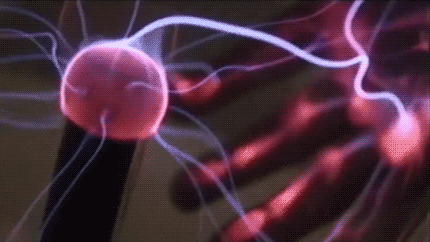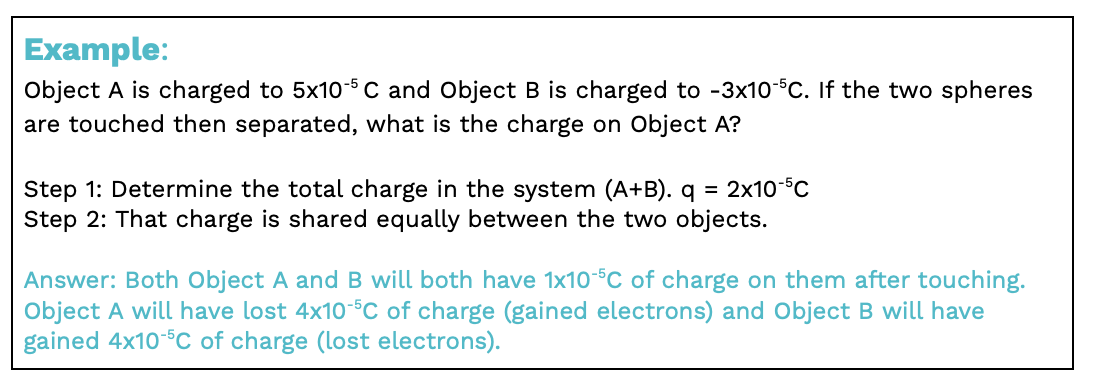8.1 Conservation of Charge
As of 2021, the College Board only tests Units 1-7 on the AP Physics 1 exam. This content will not be tested on the exam, but it remains a valuable resource for exploring the foundations of electric charge.
Enduring Understandings
5.A: Conservation of Quantities
Certain quantities are conserved, meaning the changes within a system are always equal to the transfer of that quantity to or from the system by all possible interactions with other systems.
1.B: Electric Charge
Electric charge is a property of an object or system that determines its interactions with other objects or systems containing charge.
Essential Knowledge
1.B.1: Conservation of Electric Charge
The net charge of a system is the sum of the charges of all objects in the system.
1.B.2: Types of Electric Charge
There are only two kinds of electric charge: positive and negative.
Neutral objects or systems contain equal quantities of positive and negative charges.
Some fundamental particles, like neutrons, have no electric charge.
1.B.3: Elementary Charge
The smallest observed unit of charge that can be isolated is the elementary charge (e).
What is Charge?
Charge is a fundamental property of matter, similar to mass. Key properties include:
Elementary Charge (e): The charge on a proton (+1e) or an electron (-1e).
.
Charge in larger systems is measured in Coulombs (C).
Total charge must be an integer multiple of the elementary charge, as electrons cannot be divided.

Types of Charge:
Static Charge:
Charge that remains localized.
Examples:
Shocks and sparks on dry winter days.
Static electricity causing bad hair days.
Flowing Charge (Current):
Charge moving in a loop is referred to as a circuit.
Current () is the rate of charge flow:
Where:
: Current (Amperes, A).
: Charge (Coulombs, C).
: Time (seconds).
Conservation of Charge
Charge cannot be created or destroyed. In any interaction, the total charge remains constant before and after the interaction.
Example:
If two objects interact and one gains 5e of charge, the other must lose 5e to ensure conservation. This principle underpins all electrical interactions and circuit behavior.








